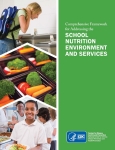Healthy School Environments

Every child deserves a healthy and safe place to learn, grow and develop. Healthy school environments support healthier children. Healthier children are less likely to be absent and more likely to achieve their academic goals.
The Tennessee Department of Health seeks to promote healthy learning places for all children and healthy workplaces for faculty and staff. Children spend up to half of their day in schools. School environments play an important role in the health and academic success of children. Unhealthy school environments can affect children’s health, attendance, concentration and performance. Healthy schools can reduce energy and maintenance costs, while providing cleaner indoor air, improved lighting and reduced exposures to toxic substances. This leads to a healthier and safer learning environment for children and work environment for personnel, fostering better attendance, achievement and productivity.
When the school environment is unhealthy, children can be exposed to allergens, pollutants, chemicals and classroom conditions that might cause their health, attendance and academic performance to suffer. Children are often more heavily exposed to toxic substances in the environment than adults because they spend more time on the ground and engage in more hand-to-mouth behavior. Children also breathe more air, drink more water, and eat more food per pound of body weight than adults. A child’s respiratory, immune, nervous, reproductive and skeletal systems continue to develop throughout childhood. Exposures to environmental contaminants that occur early in life can cause adverse health impacts in children that can have implications well into adulthood. Furthermore, children with disabilities face unique challenges that might make them particularly vulnerable to the effects of an unhealthy school environment.
Healthy School Environment Topics
Just for Fun!
Check out the Environmental Protection Agency's Healthy School Environments webpage for even more information!












